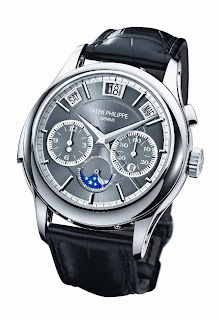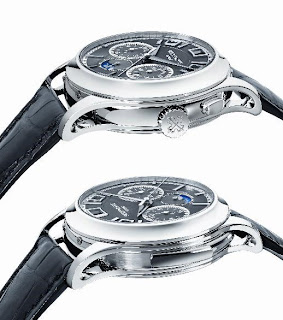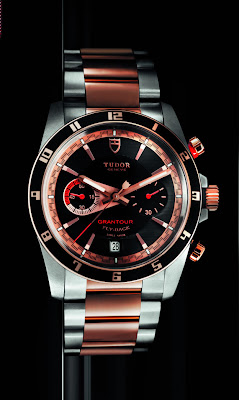BASELWORLD 2011 - SEIKO - ANANTA AUTOMATIC CHRONOGRAPH DIVER'S WATCH
Limited to just 700 pieces and representing the Japanese art forms of Katana and hand-painted lacquer, this new Ananta is a winner!
High legibility is a vital attribute in a diving watch, and to ensure that the dive time is as readable as possible even in dark waters, SEIKO commissioned Isshu Tamura, a world-renowned lacquer artist, to create a dial that is truly jet black. Each dial is painted, layer by layer, and then polished by hand by Mr. Tamura in his studio in Kanazawa on the western shores of the Japanese mainland. Isshu Tamura was born in Kanazawa in 1957, and is a master of “Kaga Makie” which is a traditional style of lacquer. The legibility is further enhanced by the use of a non-reflective coating on the sapphire glass.
The design of Ananta is inspired by Katana, the ancient Japanese art of sword making. The katana sword was first developed more than 800 years ago and symbolizes the high value that Japanese culture puts upon traditional skills and innovative manufacture, and is therefore the perfect inspiration for Ananta.
“Limited Edition” and the serial numbers will be engraved on each case back. The watch is presented in an exclusive gift box with the “SEIKO 130th Anniversary” emblem.
High legibility is a vital attribute in a diving watch, and to ensure that the dive time is as readable as possible even in dark waters, SEIKO commissioned Isshu Tamura, a world-renowned lacquer artist, to create a dial that is truly jet black. Each dial is painted, layer by layer, and then polished by hand by Mr. Tamura in his studio in Kanazawa on the western shores of the Japanese mainland. Isshu Tamura was born in Kanazawa in 1957, and is a master of “Kaga Makie” which is a traditional style of lacquer. The legibility is further enhanced by the use of a non-reflective coating on the sapphire glass.
The design of Ananta is inspired by Katana, the ancient Japanese art of sword making. The katana sword was first developed more than 800 years ago and symbolizes the high value that Japanese culture puts upon traditional skills and innovative manufacture, and is therefore the perfect inspiration for Ananta.
“Limited Edition” and the serial numbers will be engraved on each case back. The watch is presented in an exclusive gift box with the “SEIKO 130th Anniversary” emblem.










